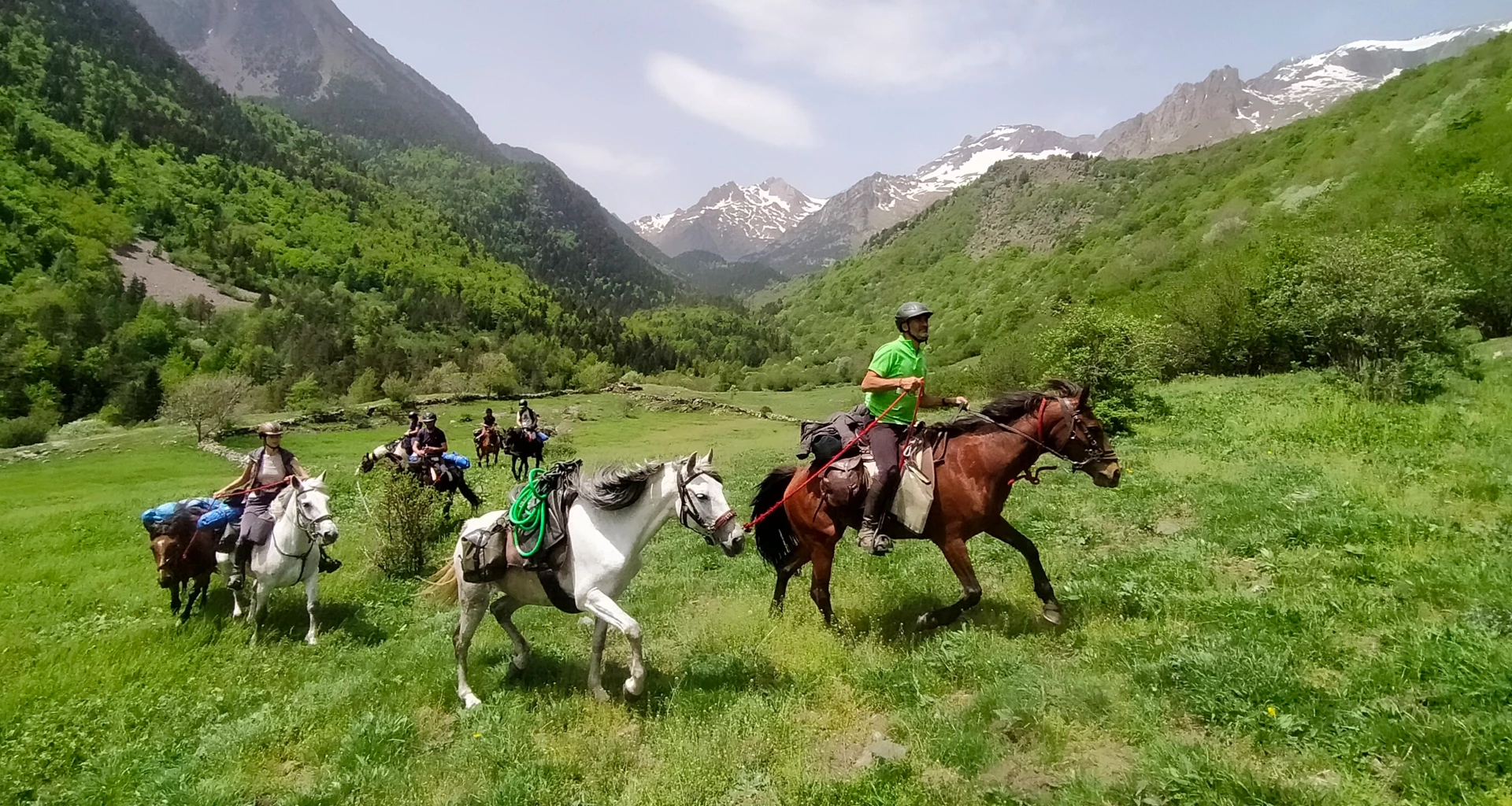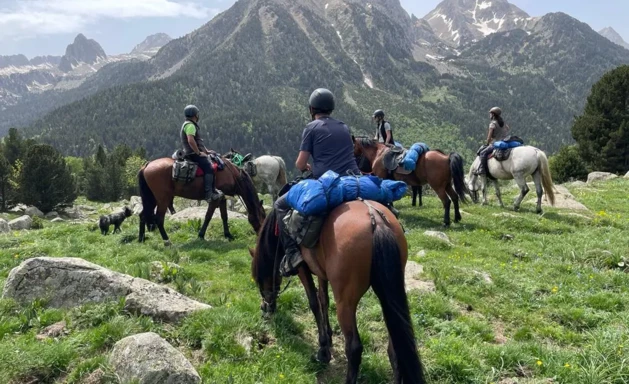Equestrian training: Learn how to plan rides for individuals
Embarking on an equestrian ride is an activity that combines sport, nature, and a unique connection with your horse.

Setting off on an equestrian ride without a guide is not only a rewarding experience, but also brings numerous personal and physical benefits—though it is essential to have previous training.
Below, we explain some of the theoretical and practical knowledge that Anima Equi aims to provide in our training activities, designed for horse owners who want to explore the exciting world of equestrian tourism.
Theoretical course aspects
At Anima Equi, we offer an Introduction to Equestrian Tourism course, lasting two weekends. The first weekend includes a couple of online sessions covering the most theoretical aspects of equestrian tourism: equipment, characteristics of a trail horse, packhorse techniques, ride preparation, overnight stays, feeding, topography and orientation, road safety, logistics, regulations, hoof care, and basic veterinary concepts.
During the second weekend, we put it all into practice with a self-sufficient equestrian tourism ride—meaning we ride out carrying everything needed for the trip, without any assistance. We bring our food, tent, personal belongings, and, of course, the horses' feed.
Practical course aspects
The goal of this training is not to cover long distances, but to put equestrian tourism techniques into practice. We are in an exceptional natural setting, the Benasque Valley in Huesca, at the heart of the Aragonese Pyrenees. Sleeping in a tent with the horses during the ride is an experience in itself.
For example, we practice the following techniques:
- Preparing the horse’s specific gear for equestrian tourism: load distribution and arrangement.
- Packhorse techniques.
- Ride topography and orientation, both with analog and digital tools.
- Ride progression: stops and supply points.
- Setting up camp: types of horse overnight stays.
- Analysis of equestrian tourism equipment: knots, feeding, etc.
- Strategies for emergency hoof care or veterinary issues in the field; checking essential kits.
- How to handle different types of terrain: roads, trails, open fields, etc.

The practice of equestrian tourism
Venturing into nature on horseback offers many benefits and is a unique experience that helps us disconnect from daily routines. Though it requires good preparation, it brings numerous advantages:
- Development of autonomy and confidence: Managing and caring for a horse independently builds self-confidence and fosters independence. This experience allows riders to make decisions and solve situations on their own—skills that can be applied to other aspects of life.
- Deep connection with nature: Riding solo through landscapes offers a full immersion in the natural environment. This practice allows for a more intimate and personal appreciation of the scenery, helping to disconnect from the daily hustle and better appreciate the environment.
- Improved physical and mental well-being: Riding is a complete physical activity that enhances posture, balance, and coordination. Additionally, contact with nature and animals helps reduce stress and boosts emotional well-being.
- Strengthening the bond with your horse: Spending time alone with your horse develops a closer relationship and better mutual understanding, making communication easier and the ride more enjoyable.
At Anima Equi, we recommend that equestrian tourism outings are done in groups of at least two people. Solo riding adventures should only be attempted after a learning process and with full awareness of the increased risks.
Recommendations and precautions
To safely undertake equestrian rides without a guide, you need a solid foundation of prior training and, of course, thorough ride planning. For those interested in this adventure but lacking the necessary knowledge, we recommend Anima Equi’s Introduction to Equestrian Tourism course. It is designed for experienced riders who want more complete training to ride autonomously.
In this course—whose complete program you can find here—you will learn everything you need for outdoor riding: how to prepare the horse’s gear for rides, tie strong knots, perform emergency hoof care, basic veterinary first aid, as well as basic topography and orientation.
One thing we can promise about this activity: no matter your age, you will never be bored.
